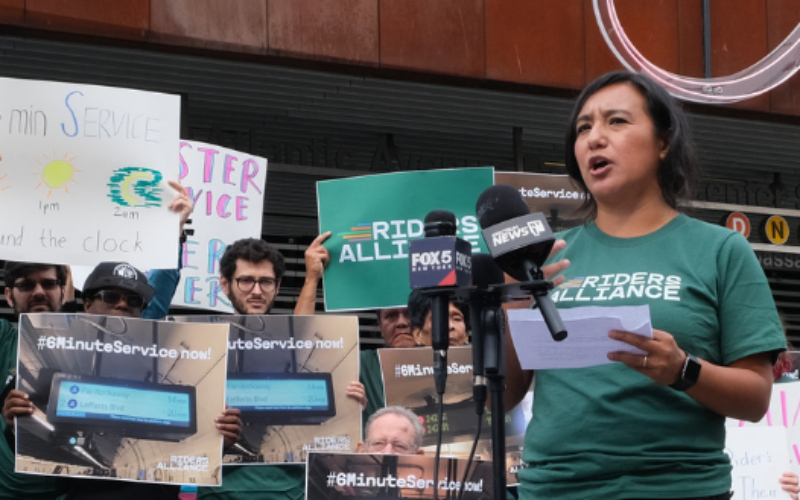

Erin Barnes of In Our Backyards (IOBY) and Mike Lydon of Street Plans Collaborative, both civic entrepreneurs based in Brooklyn with a growing national following, recently spoke on a panel at the Congress for the New Urbanism about “tactical urbanism.” That term, which I recently heard for the first time, represents a new way to influence a city’s form by involving residents in constructive projects.
Erin’s IOBY organization, launched in 2010, uses the internet to enable residents and civic groups to connect with each other and raise funds for neighborhood projects ranging from community gardens to compost centers to house painting and restoration. Mike’s Street Plans Collaborative helps residents make informal and in some cases unofficial improvements to their public realm, such as the creation of local shopping districts or public plazas on under-utilized vacant parcels of asphalt.
Hearing Erin and Mike talk about the manner in which they activate people for the common good made me realize that they may have hit upon an ingenious middle ground between two caricatures of conventional urban planning. The top-down approach associated with Robert Moses in the mid-20th century, characterized by imperious technocrats who can impose large physical infrastructure on a city without any regard for the affected people and neighborhoods, unfortunately (and somewhat unfairly) gave “urban planning” a negative connotation by the time the damage it inflicted coincided with the anti-establishment sentiments of the late1960s. The neighborhood power that emerged was personified, of course, by Jacobs, and we should be grateful for the neighborhoods that were preserved and the new norms of city planning which resulted. Yet the more inclusive approach to urban planning that flowed from the 1960s and 1970s, with its legal (and political) requirements for public involvement, also is (somewhat fairly) critiqued for simply providing an outlet for cranky and non-representative interests to snarl any proposal in ritualistic red tape, and the proverbial “build nothing anywhere near anyone” BANANA.
Tactical urbanism is all about doing things, as Moses-ism supposedly was, but doing them in a participatory way and at a scale that builds community, which is in some ways Jacobs-ism. So in addition to the tangible work they are doing with garden trowels and paint brushes, maybe Erin and Mike and their colleagues in tactical urbanism are also inadvertently re-inventing the field of urban planning.
 Built to Win: Riders Alliance Campaign Secures Funding for More Frequent Subway Service
Built to Win: Riders Alliance Campaign Secures Funding for More Frequent Subway Service
Thanks to Riders' Alliance successful #6MinuteService campaign, New York City subway riders will enjoy more frequent service on nights and weekends, starting this summer. In this post, we chronicle the group's winning strategies and tactics.
Read More A Bus Agenda for New York City Mayor Eric Adams
A Bus Agenda for New York City Mayor Eric Adams
To create the “state-of-the-art bus transit system” of his campaign platform, Mayor Adams will have to both expand the quantity and improve the quality of bus lanes. We recommend these strategies to get it done.
Read More